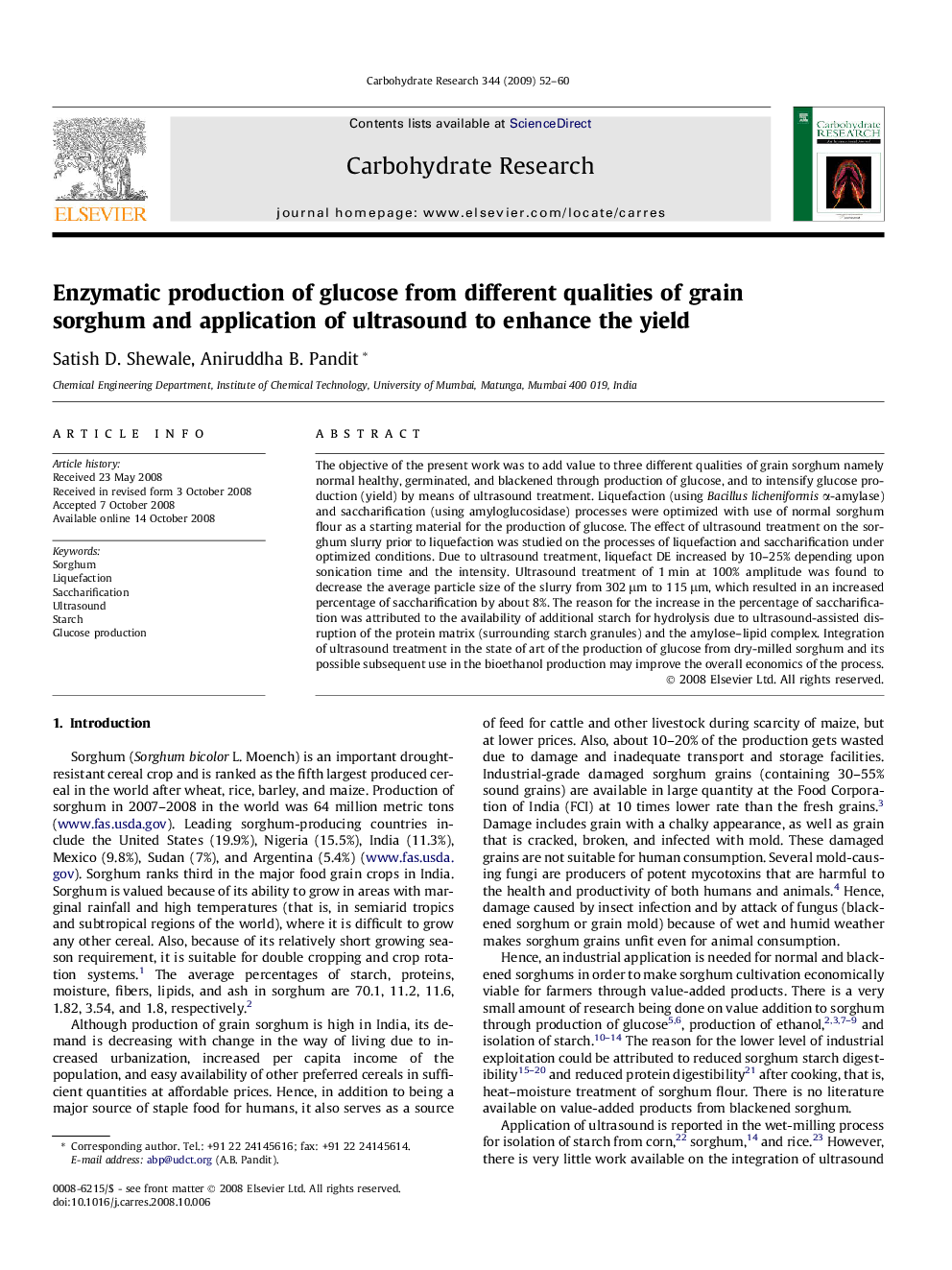| Article ID | Journal | Published Year | Pages | File Type |
|---|---|---|---|---|
| 1388995 | Carbohydrate Research | 2009 | 9 Pages |
The objective of the present work was to add value to three different qualities of grain sorghum namely normal healthy, germinated, and blackened through production of glucose, and to intensify glucose production (yield) by means of ultrasound treatment. Liquefaction (using Bacillus licheniformis α-amylase) and saccharification (using amyloglucosidase) processes were optimized with use of normal sorghum flour as a starting material for the production of glucose. The effect of ultrasound treatment on the sorghum slurry prior to liquefaction was studied on the processes of liquefaction and saccharification under optimized conditions. Due to ultrasound treatment, liquefact DE increased by 10–25% depending upon sonication time and the intensity. Ultrasound treatment of 1 min at 100% amplitude was found to decrease the average particle size of the slurry from 302 μm to 115 μm, which resulted in an increased percentage of saccharification by about 8%. The reason for the increase in the percentage of saccharification was attributed to the availability of additional starch for hydrolysis due to ultrasound-assisted disruption of the protein matrix (surrounding starch granules) and the amylose–lipid complex. Integration of ultrasound treatment in the state of art of the production of glucose from dry-milled sorghum and its possible subsequent use in the bioethanol production may improve the overall economics of the process.
Graphical abstractUse of ultrasound shows an enhancement in the per cent saccharification.Figure optionsDownload full-size imageDownload as PowerPoint slide
